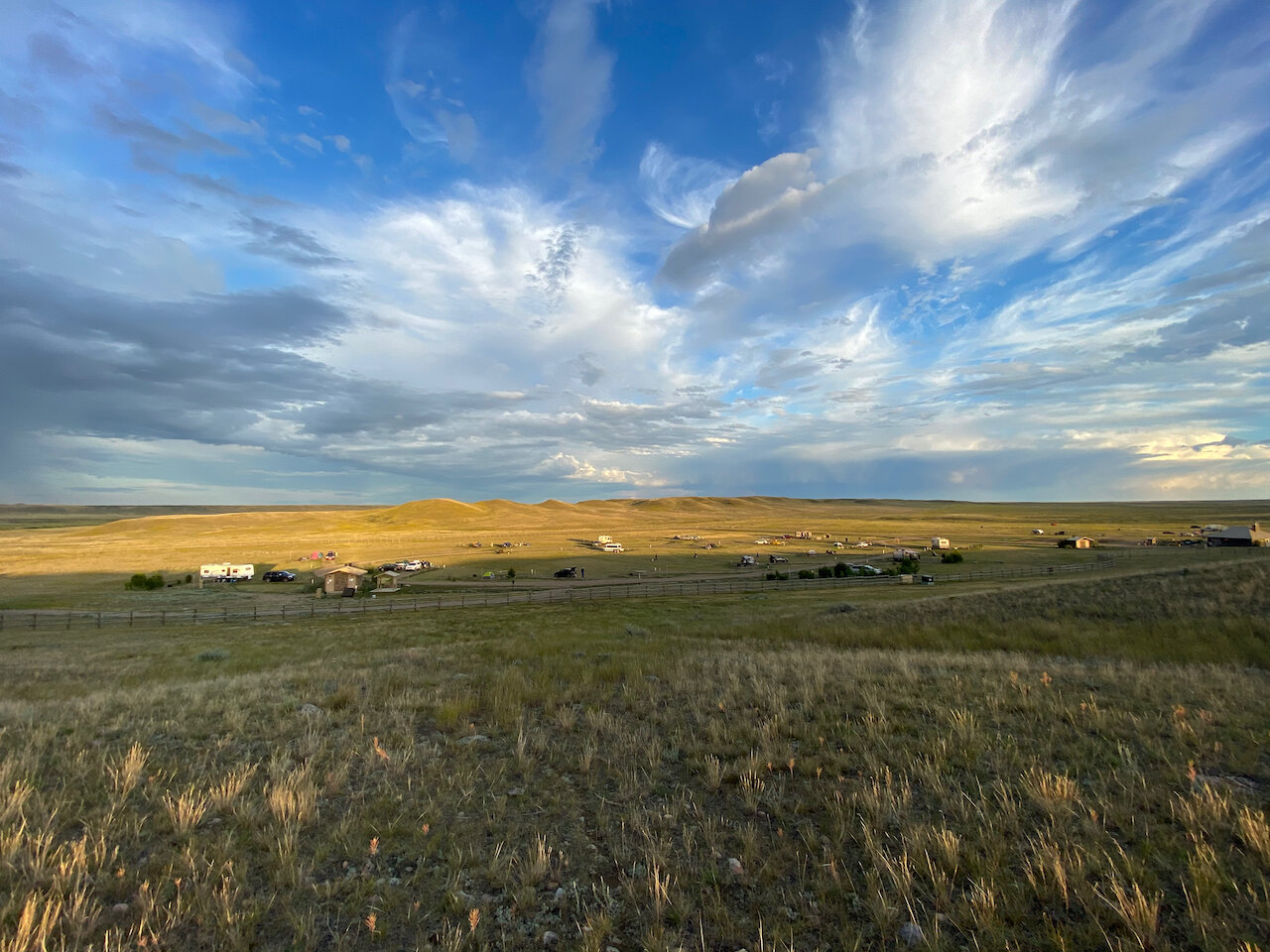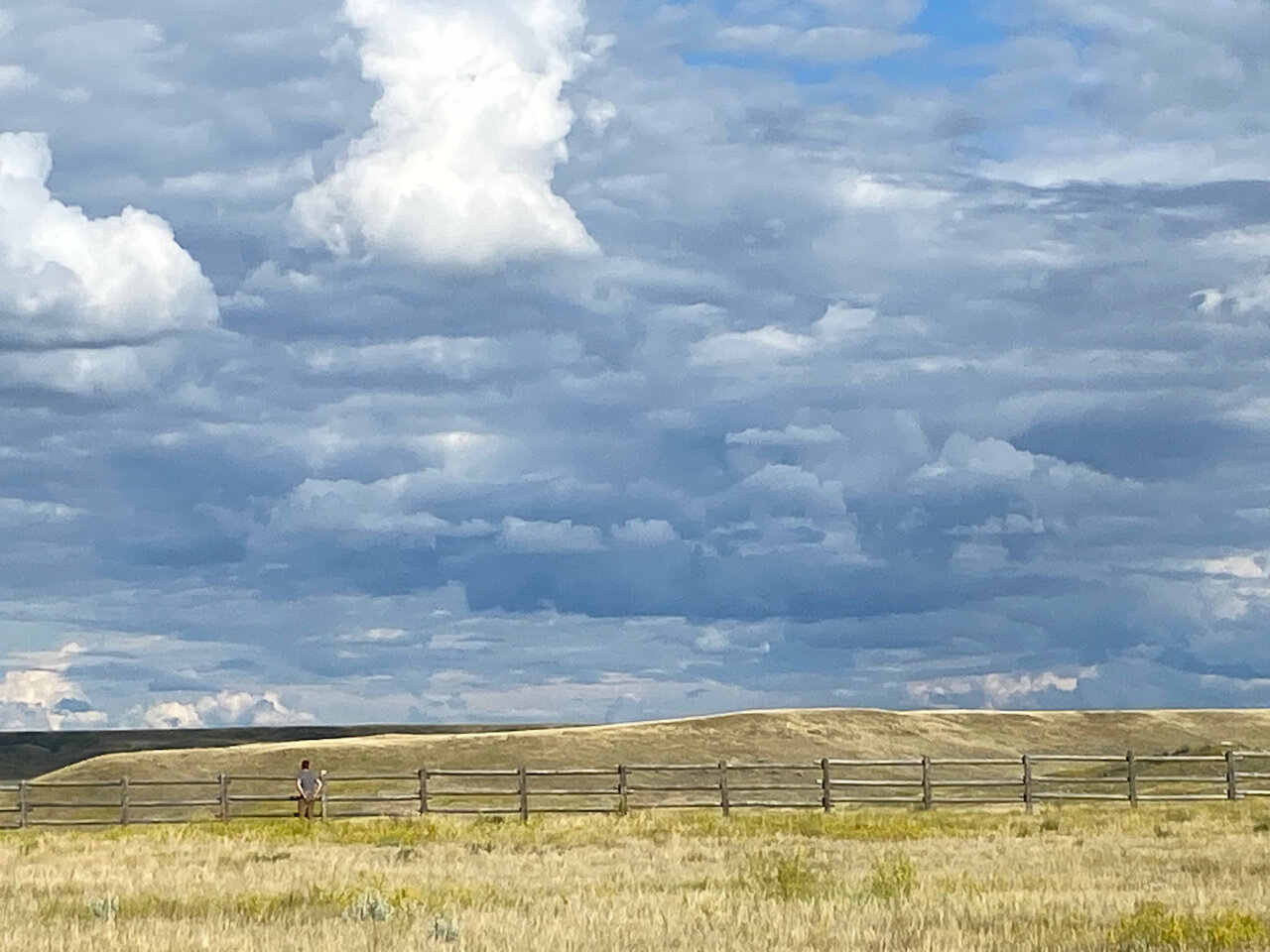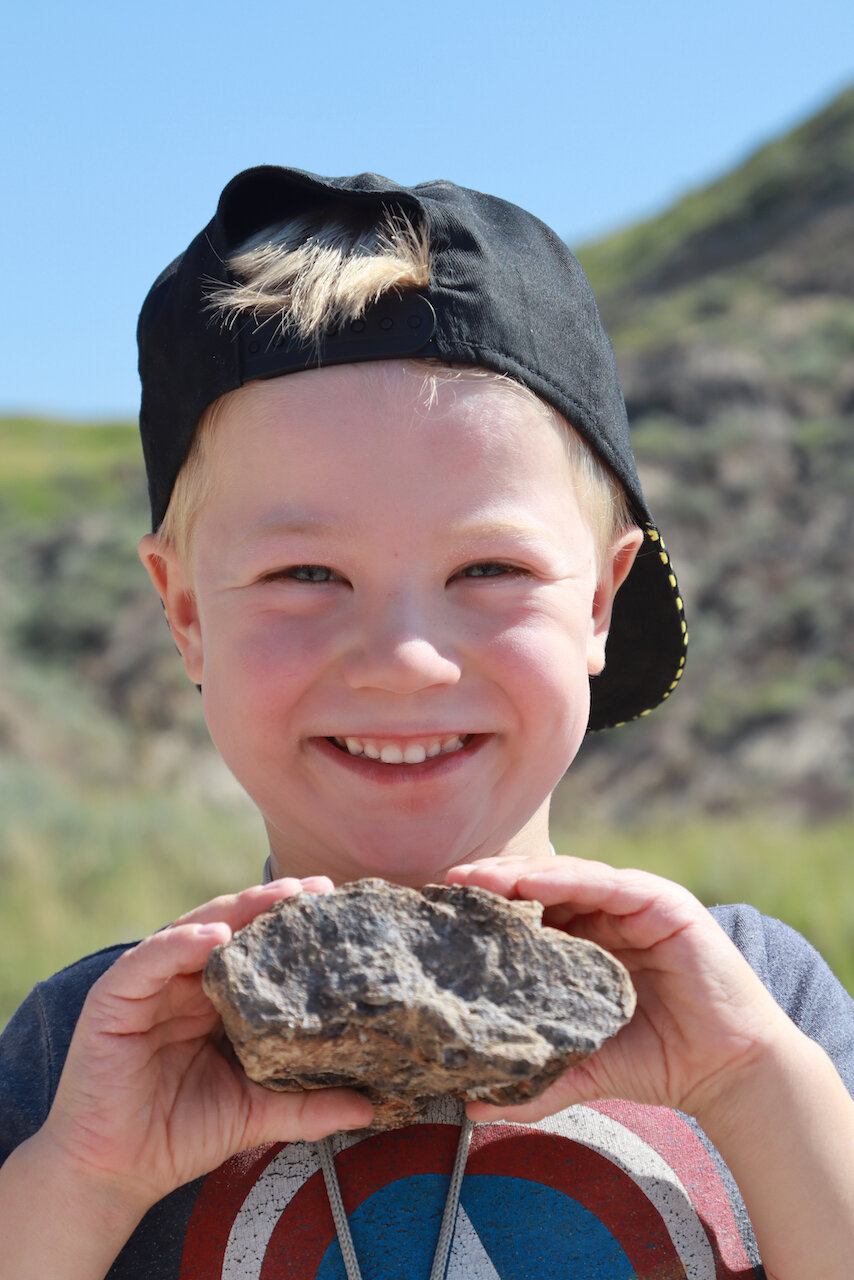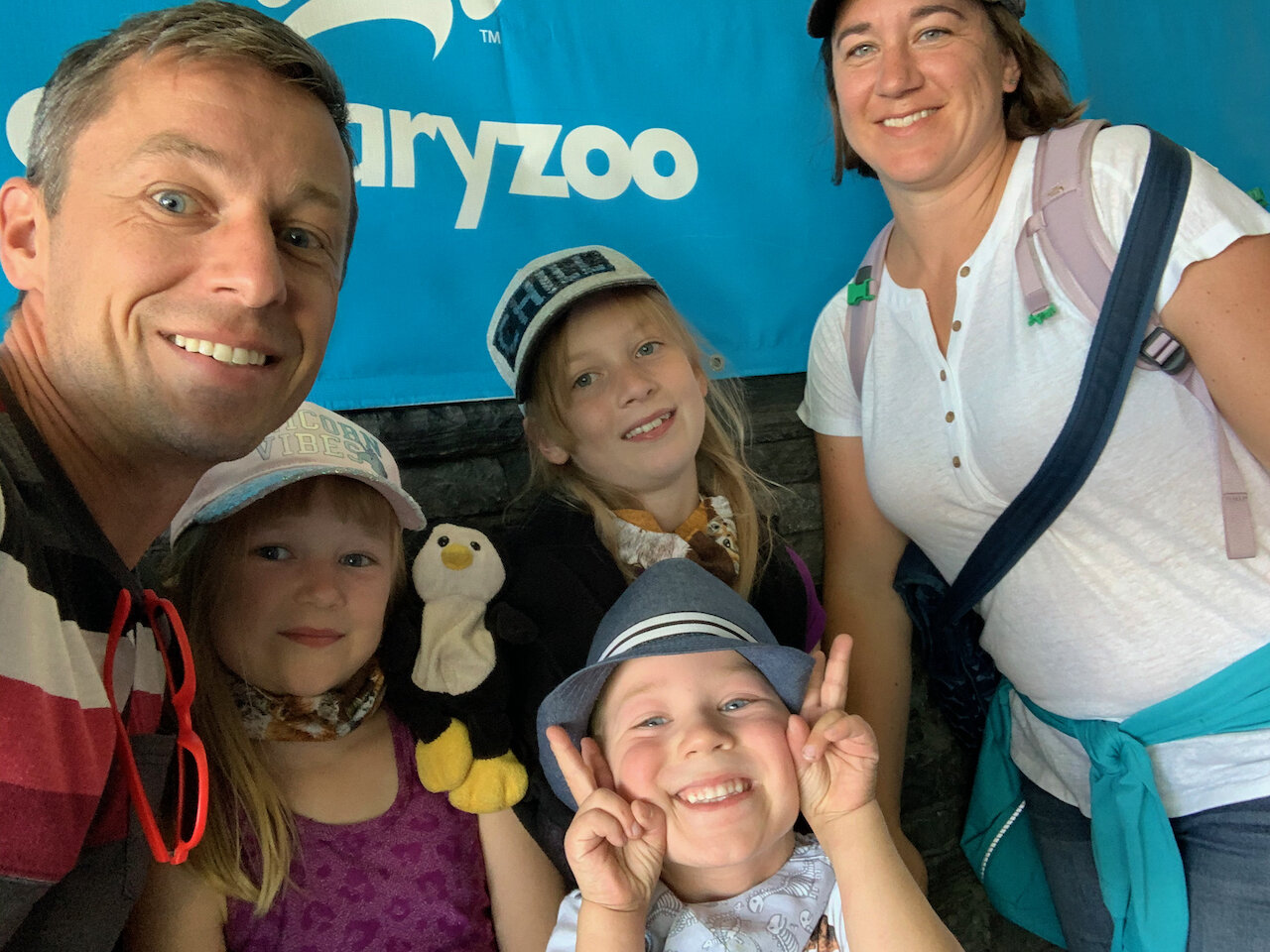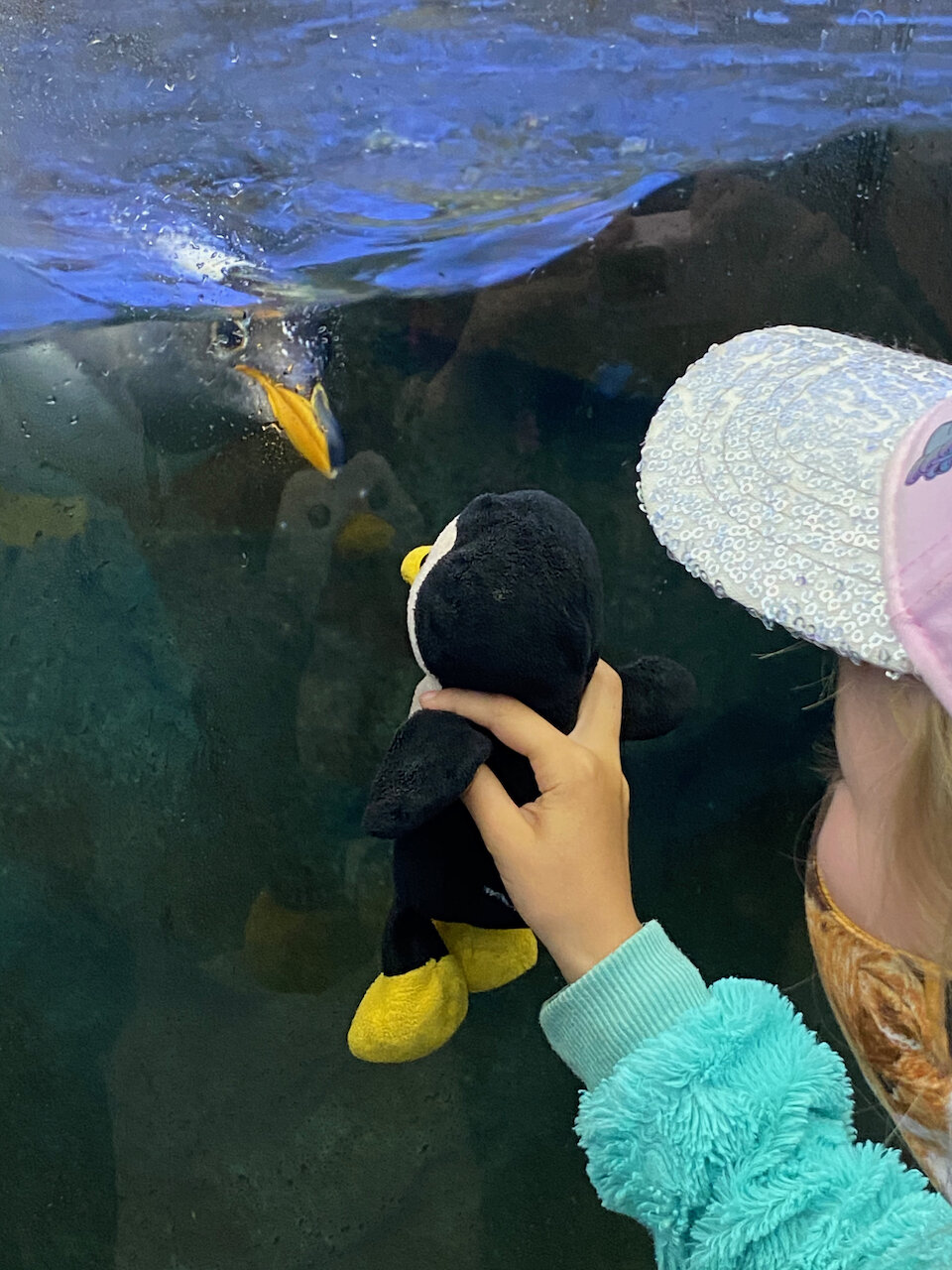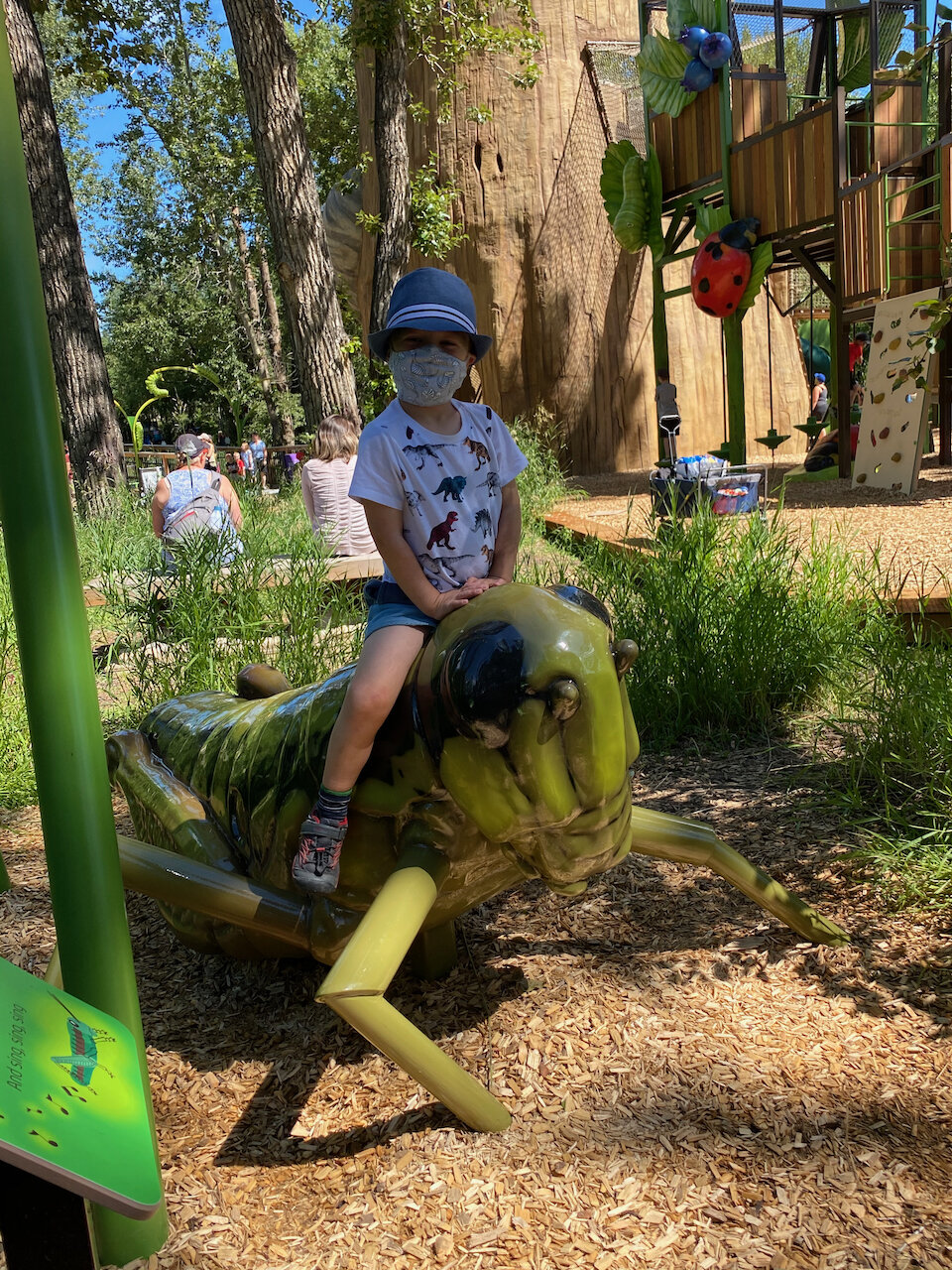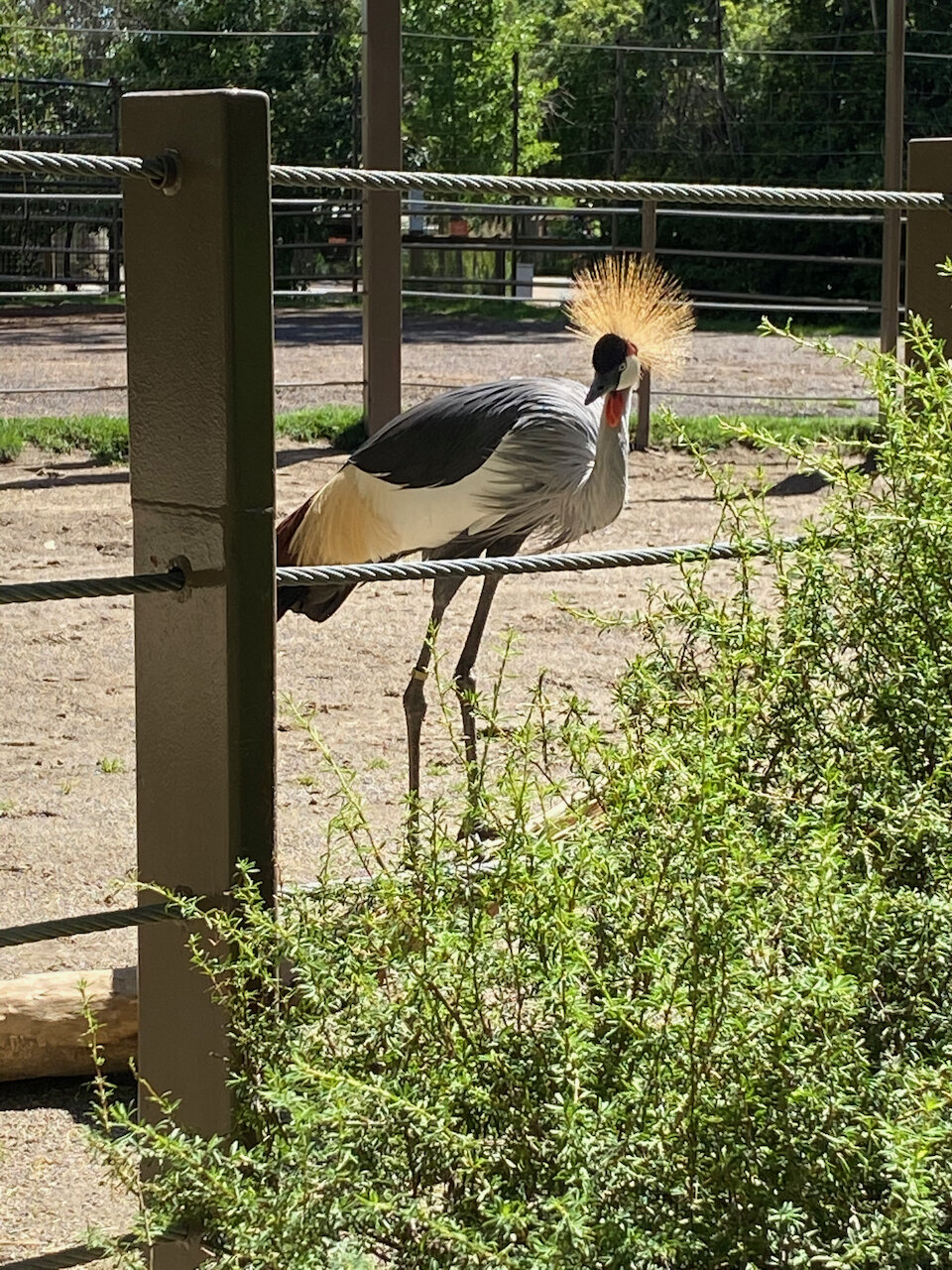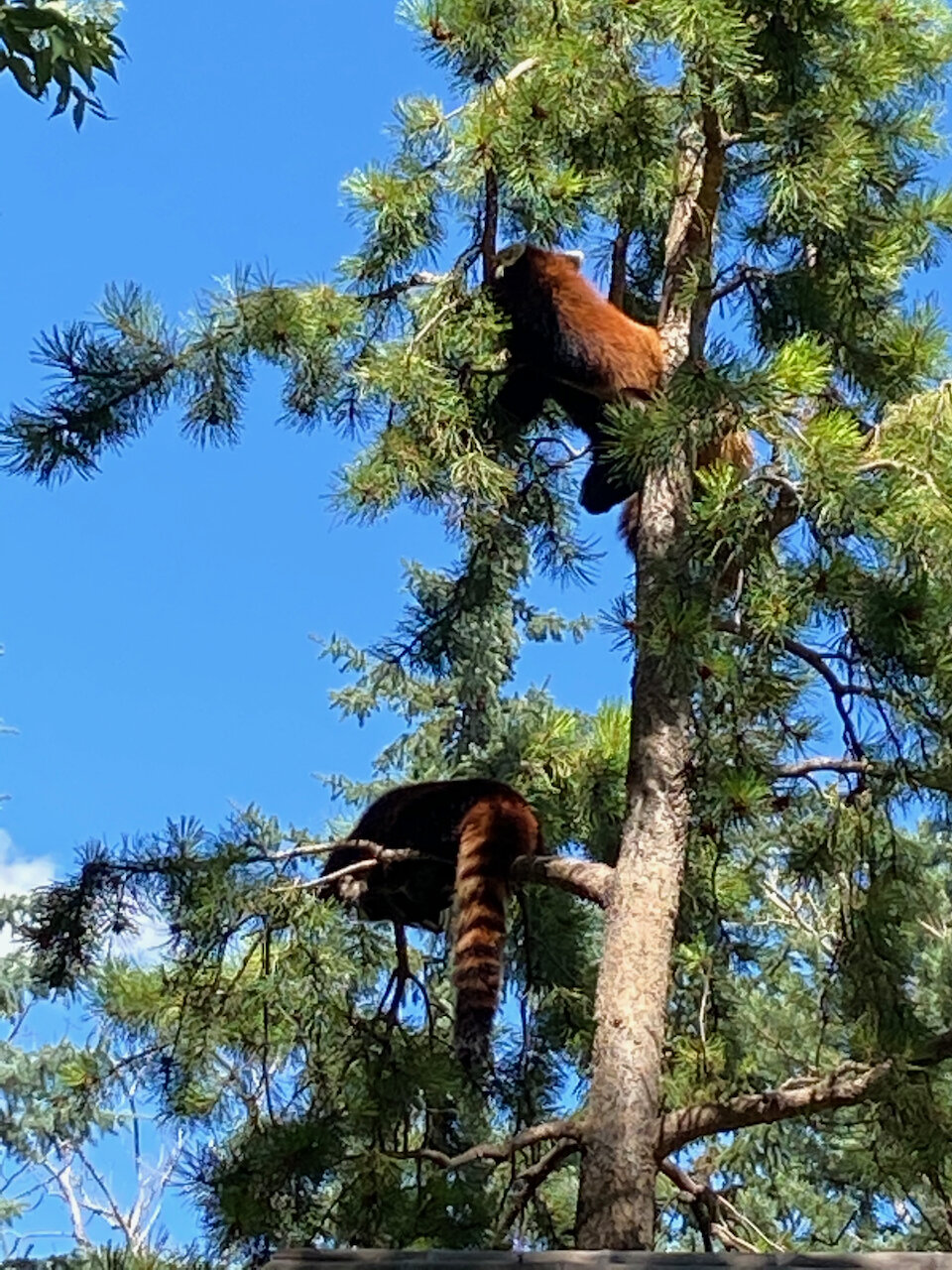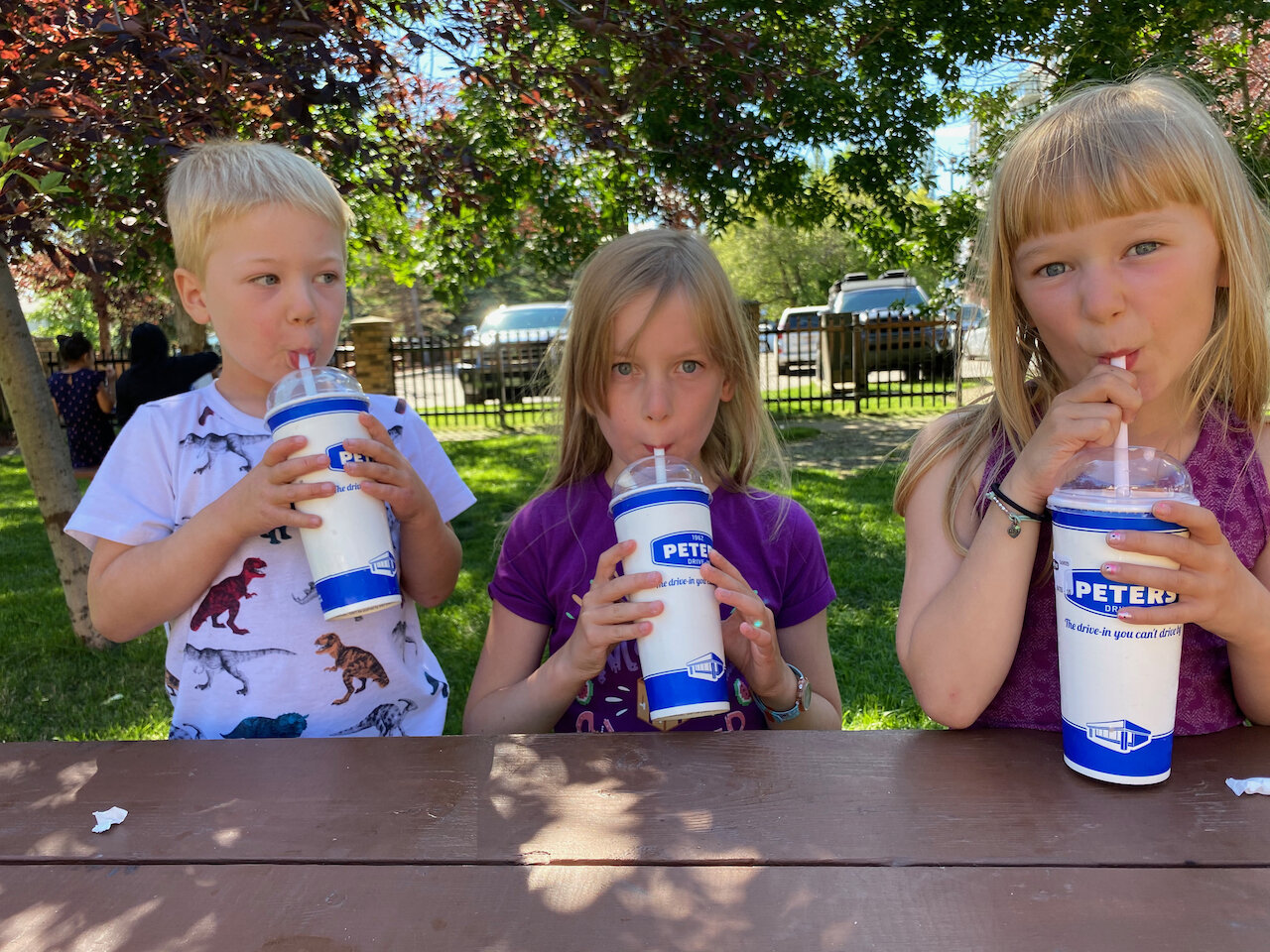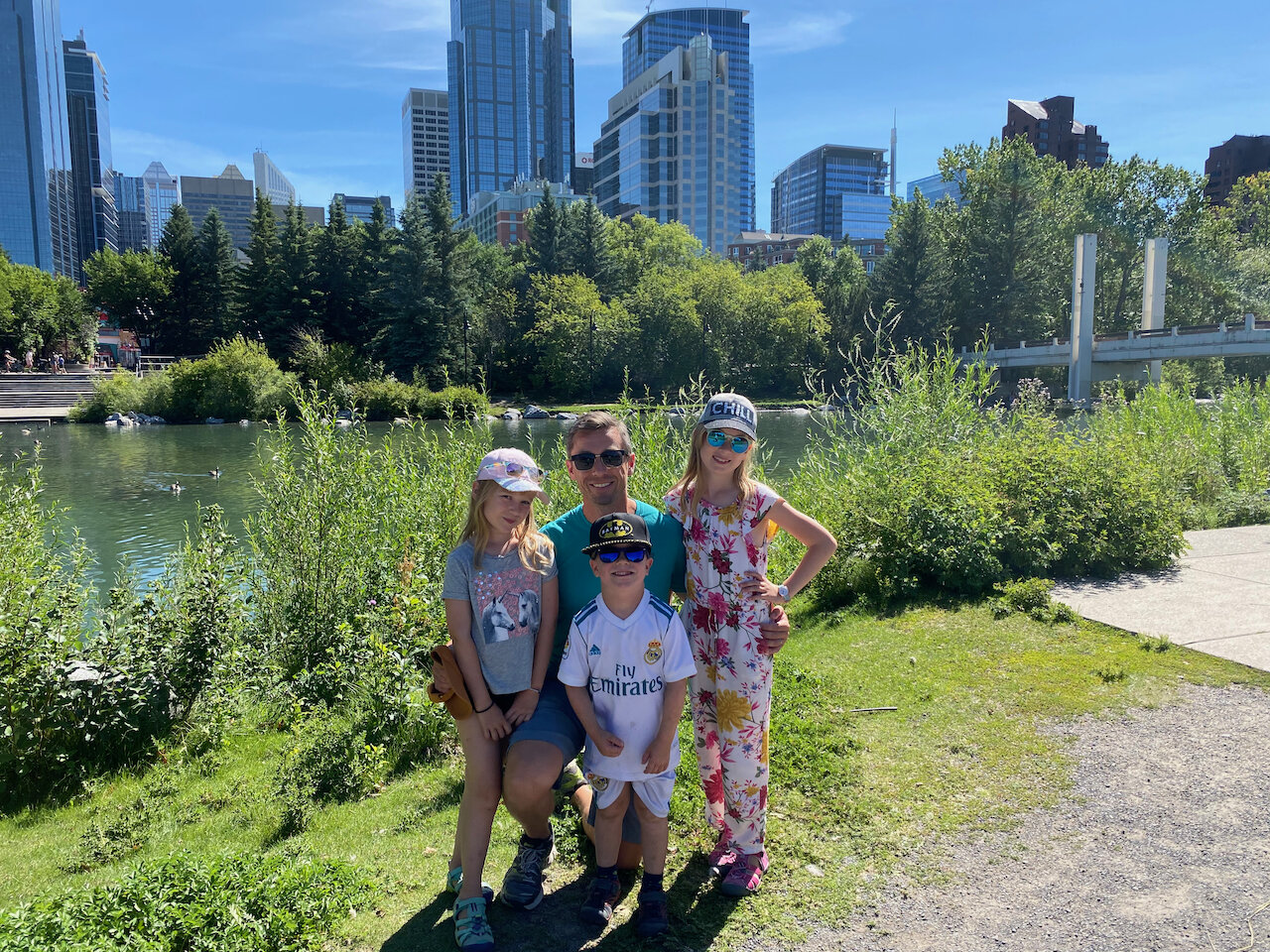“Ahhh, I can breath again!”. This was Erik’s statement when we finally broke out of the rocky, tree covered hills of Ontario and into the flat, farm fields of Manitoba. Although I rolled my eyes at him (I prefer the winding, hilly drive through forest), I could also appreciate how much more space one can feel they have when one can see for miles. I will say this about the Prairies: there is no beating a Prairie sky!
The highway got straighter, and smoother, and the speed limit increased. We made good time. We also stopped at the longitudinal centre point of Canada.
We spent two glorious weeks in Shoal Lake with family. You can read about our time there, here.
With COVID restrictions, we were not able to camp at any of the provincial parks in Saskatchewan. We had booked a spot by a lake initially but had to cancel when we learned about the restrictions. Instead, Erik found Grasslands National Park at the very Southern edge of the province, south of Swift Current. This came to be one of our favourite places to date.
Grasslands Park was established in 1981 with the mission to preserve the prairie lands as they would have existed before agriculture. It is a sprawling 900 square km and we had to take a windy and sometimes steep dirt road 20km into the park to get to the campsite. Along the way, we passed 5 of the self-drive tour stops and saw prairie dogs, a bison, and lots of birds. The views were gorgeous and the sky was so vast and textured. I was giddy with awe – who knew Saskatchewan could look like this? And as we looked around, we couldn’t help but imagine being early settlers or First Nations members who made this land their home and roamed with the bison. Speaking of First Nations, there are a large number of remains of teepee circles throughout the park, left behind from thousands of years of habitation. At our awesome campsite, there were signs posted warning campers that rattlesnakes and black widow spiders lived in the area and to use precaution. What!?!? In Canada!!
This park is also a dark-sky preserve which meant we had AWESOME star gazing opportunities. In fact, the two nights we stayed were clear and we were able to see the NEOWISE comet that was transiting Earth at the time of our stay. We woke the kids to come out to see the full sky, the bright milky-way, and the comet. They all were amazed - as was I - to see so many stars. At best, we would catch sight of the big dipper from our small slice of sky in the middle of the brightly lit city. We tried to capture this comet with our under-equipped camera so the results aren’t great but the memories are strong.
As we rolled (pun intended) out of Saskatchewan and into Alberta, I will now tell everyone I talk to about how hilly Western Saskatchewan is and how flat Southern Alberta is. I have always thought Saskatchewan was our flattest province – it has had this reputation for me my whole life, but this was not our experience. There are many soft hills that make the landscape feel more like rolling along in a boat while the sea moved around you. Up – over – around – down – up - over - around – down. It had a breezy summer softness to it with just enough movement to keep you wanting more.
Our target was Drumheller with the promise of seeing “real dinosaurs”. We drove north from the Trans Canada Highway, through well-appointed farm lands (seriously, we didn’t see any property requiring upkeep or any yards with old machines or piles of rubbish – I think their farms were thriving). And just as I had remembered from a childhood trip to the West, the ground suddenly fell away and we descended, steeply, into the multi-coloured, rusty, layered hills of the Badlands. Wow! It got some oohs and ahhs from our otherwise hard-to-impress mini travellers. Simon was giddy to see the fibreglass dinosaur statues that decorate the town. One dinosaur statue really earned our respect: the largest one in the World which is located at the tourist information centre. It was built in 2001 and portions of the proceeds it earns (you can pay to climb its belly and reach its mouth) are returned to the town via support to social programs.
Of course, you can’t go to Drumheller without also visiting the Royal Tyrrell Museum! And thankfully the museum was open and operating with timed entry, social distancing, face masks, and no interactive exhibits. Not the full experience, but we’ll take it!!
We also purchased a two-hour program where we could go with a guide into the badlands and learn about fossil identification. Our guide was witty and charismatic – the kids loved him – and he led us to a place with loose rocks strewn about. We were then let free to inspect the rocks to find real fossils. Molly found the first one – a chunk of dinosaur leg bone. We found lots of duds but also a few true bone fossils. One fossil had a tiny spec of amber. That was a crowd favourite!
Hoodoos
We also visited the hoodoos and climbed the clay sides of the rock formations. It was pretty easy to fill our two days with fun activities!
After Drumheller we headed West and South to the beautiful city of Calgary. We got a campsite within the City limits and striking distance to Hwy 1. We took full advantage of our three nights there by devouring two wonderful dinners with my Godparents and their family as well as feasting on a fabulous brunch with my Aunt and Uncle. We spent a day at the Calgary Zoo and toured downtown where Erik reminisced about his university years and showed us around Prince’s Island. We had great weather for both days. It was hard to leave and the kids have asked if we can move to Calgary.
From there we started our push for the North. We had back-to-back travel days that got us to Slave Lake, AB and then Pink Mountain, BC. Our adventure continued along the Alaska Highway and our biggest driving push to get to Whitehorse, YT.
You can also watch our Central Canada travel video on our YouTube channel here.





